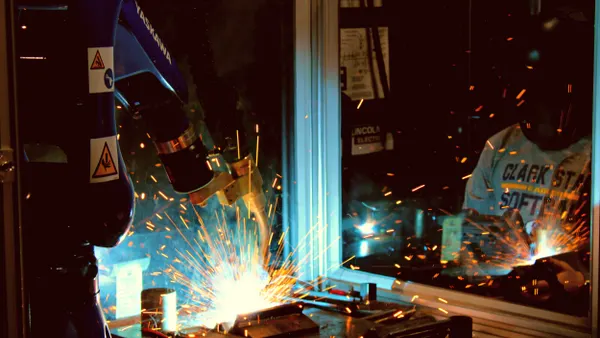Workplace bias has been in the spotlight in recent months, from talk about "inclusion riders" at the Oscars to an incident at a Philadelphia Starbucks that made international headlines.
Employers are increasingly feeling the pressure to remedy the problem, and it's about more than just avoiding bad press. Unconscious bias is costly, with various studies showing that inclusive businesses are more successful than their homogenous counterparts. In addition, candidates are looking for companies that are inclusive: Glassdoor reports that 67% of applicants want to join a diverse team. In a tight labor market, that's not a stat that employers can afford to ignore.
The question, then, is how employers can work to reduce unconscious bias. Starbucks, in the aftermath of the arrest of two black customers, announced that it would close its 8,000-plus U.S. stores and its corporate office for "several hours" on May 29 to conduct racial-bias training for its employees.
But does unconscious bias training work? And if so, is it enough?
As more businesses see the value of diversity, training to overcome unconscious bias is becoming more widespread. A range of unconscious biases need to be addressed, but two of the most common hit both ends of the spectrum. Affinity bias lets us feel more comfortable around people similar to ourselves. Perception bias forms assumptions about people who are different. Most people are not only unaware they hold these types of biases; they would argue they do not.
From recruitment to retirement
In HR, bias can start with job descriptions: terms like go-getter, compassionate, or fast-paced all signal a particular target group. It continues when the resumes come in; candidates with "Anglo names" have better luck, and experts say hiring managers often gravitate toward candidates with well-known former employers and common alma maters.
But it's not just HR where these biases need to be addressed. The Starbucks incident, for example, involved a front-facing employee and two customers.
“We all have biases, it’s human nature,” Laura Castillo-Page, senior director, Diversity Policy and Programs at the Association of American Medical Colleges, told HR Dive. “And they can negatively affect your decision making if you’re unaware of them.”
In the healthcare industry, for example, research has shown that patients are sometimes treated differently based on their gender or ethnicity, Castillo-Page said. The industry is working diligently to provide training, but it's also important to create and reinforce procedures and processes to make sure bias isn’t happening, she said.
Especially in industries that work with the public, training needs to be linked to company strategies, according to Amy Polefrone, president and CEO of HR Strategy Group, LLC. "Unconscious bias training is a pro-active measure for companies dealing with the public," she said. "Done properly, this should be integrated with a company’s diversity and inclusion strategy and a customer service philosophy."
Does it work?
Following the Starbucks news, there's been much public hand-wringing about whether unconscious bias training will even help the problem.
Some research suggests unconscious bias training can be successful, especially if it's offered in a generic way. When learners understand that everyone has biases, they may be more willing to examine their own. But if the training comes from a “let’s weed out the bad apples” approach, training may not only leave the problem unresolved but it also can backfire, as Google recently discovered.
With a large variety of training options available, some specific to their market, others more generalized, employers should be able to find a program to meet their needs. And companies may want to consider that such training be voluntary, Calvin Lai, assistant professor at Washington University in St. Louis, told HR Dive. "Mandatory diversity training is generally related to reduced hiring of minority applicants," he said. Training can change minds, he added, but its effects on behavior are more tenuous and depend a lot on execution.
"To me, a mark of a successful training program is when participants say, 'I never thought about it like that,'" Polefrone said. "A successful training program, should challenge assumptions and get people to understand how other people perceive their actions."
Reinforcement
Unconscious bias training can be an eye-opener, Castillo-Page said, but without an inclusive culture and inclusive policies and procedures that ensure decisions are made equitably, it may not succeed.
Companies can reinforce training with structured policies. Technology can remove names and other information from resumes to help screeners focus on relevant information. Diverse interview teams can bring in more points of view. Even standardizing interview or performance evaluation questions can help level the playing field. When employees have rules to follow, they may be less likely to respond instinctively, where bias can come into play. “Companies can develop non-bias procedures baked into the system,” Castillo-Page said, “to help employees focus only on objective criteria.”
Employers may not be able to force people to change their thoughts, but as employers, “we must strive for cultivating a respectful workplace, in accordance with the company’s core values,” Polefrone said. People must be accountable for their behavior and alignment to the company’s values and customer service principles, she added. With structured policies in place, instinct is removed from the process; people who know what is expected may be more likely to adhere to those standards.
Castillo-Page agrees that you can change behaviors, even if you can’t change minds. But often people are shocked by their own responses. They don’t realize how quickly they’ve made a judgment. “Once we recognize our biases, we can practice being more open minded: but you have to be willing to learn and grow.”
The bottom line
A more welcoming and diverse workplace can have myriad benefits for employers: better brand perception, improved talent acquisition and a boost for both employee retention and profits. But even the best unconscious bias training available can only take you so far.
For companies to take real steps toward reducing bias in the workplace, training must be accompanied by good policies and procedures. And those must be part and parcel of a culture of respect and inclusion.




















